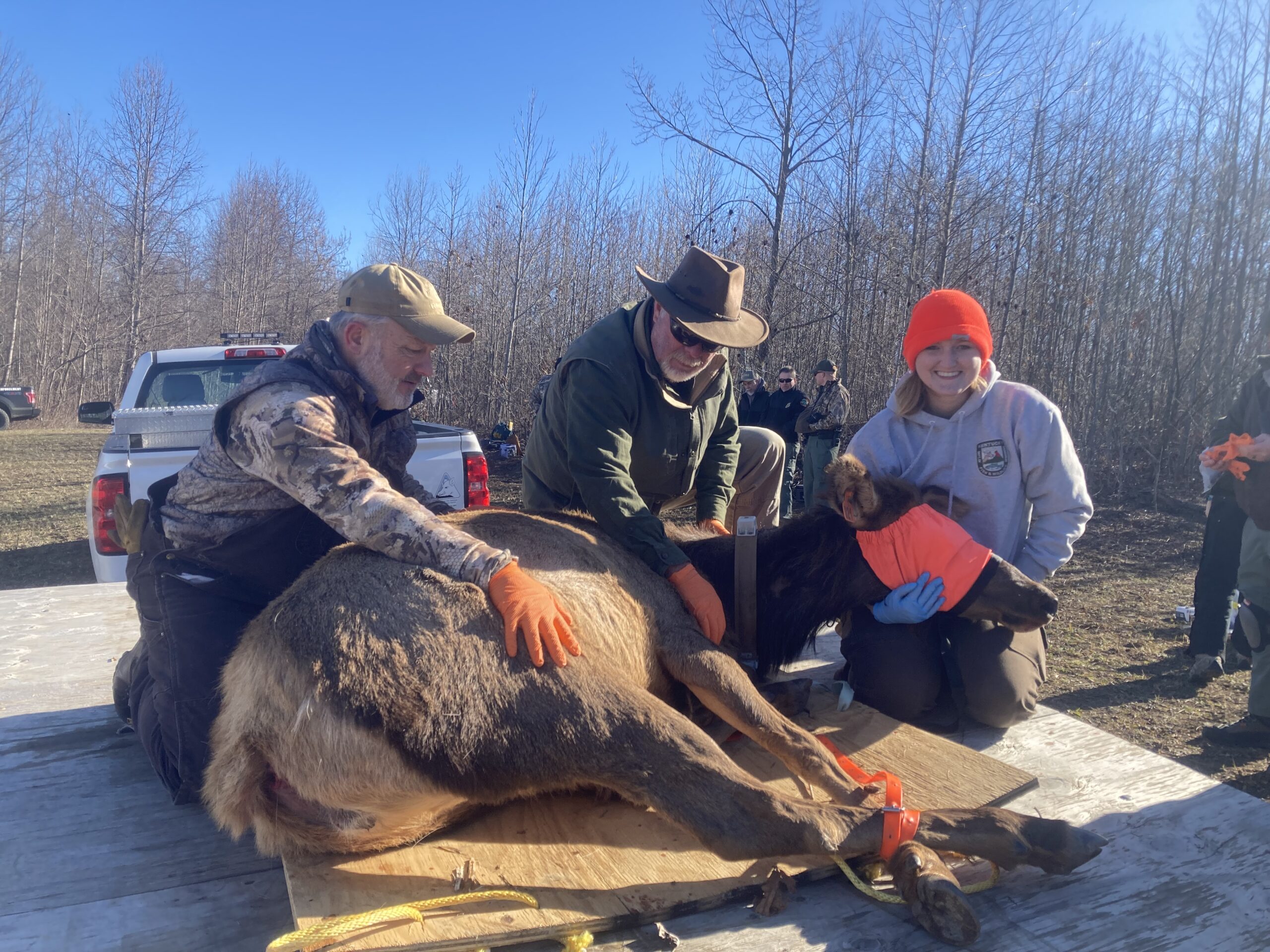Elk really do fly. At least, they did recently thanks to the Tennessee Wildlife Resources Agency (TWRA), University of Tennessee, Kentucky Department of Fish and Wildlife Resources and the Rocky Mountain Elk Foundation. The partners teamed up for an ongoing two-year study so researchers can better monitor elk calf survival and the causes of mortality.
“We’re putting a transmitter inside the pregnant cows…with hopes when they give birth in May or June, we’ll be able to collar the calves and monitor them over the course of their life,” said Garrett Clevinger TWRA elk program coordinator. “This is pretty important. It’s not something we’ve done yet…so we can better understand population dynamics of this species.”
Since RMEF helped with the successful restoration of elk into Tennessee in 2000, researchers looked at many aspects of elk survival and habitat use. However, that research has always focused on the adult segment of the population.
This latest outing concluded the second year of cow capture via helicopters with a focus on calves. Researchers also collected data about habitat characteristics of calving sites.
“This project will provide TWRA with important new information about Tennessee’s growing elk herd. We’re excited to see the results of this research in the coming years,” said Will Bowling, RMEF conservation program manager-southeast US, who was also on site to help with the project.
Click here to watch a TWRA Facebook video about the project.
The study received financial support as part of $842,662 in grant funding doled out by RMEF and its partners across five Appalachian states in late 2023.
(Photo credit: Rocky Mountain Elk Foundation)
